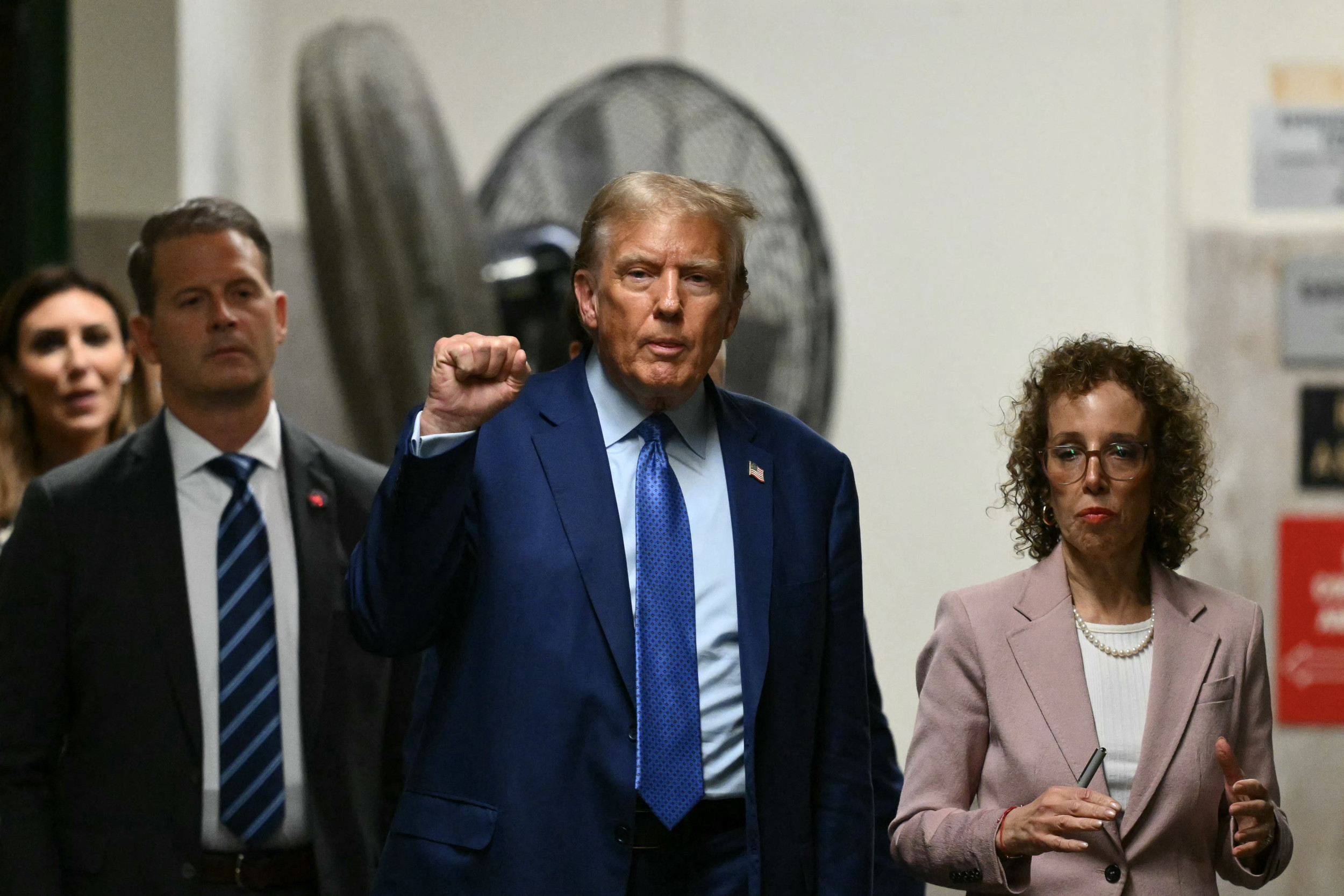
This article first appeared on the London School of Economics site.
The promise of fiscal stimulus has resonated in financial markets.
The build up to the U.S. election was extremely divisive and a Trump presidency was seen by many as potentially catastrophic.
Paradoxically, one of the most striking developments since the election has been the positive reaction of U.S. financial markets: the stock market is up, UST bond yields are higher and the U.S. dollar is stronger against most currencies.
This reaction largely reflects the conciliatory tone and pro-growth comments that President-elect Trump has delivered so far. His pro-growth remarks have been particularly powerful as they involve a bold fiscal policy stimulus led by infrastructure spending.
If Mr. Trump walks the talk, his remedy would be very similar to what professor Larry Summers and other influential commentators have prescribed in recent years as the way to avoid a so called "secular stagnation."
It is also remarkable that long term UST bond yields and market-based measures of U.S. inflation expectations have jumped up following the Trump victory. These are outcomes that the Fed has fought hard but has largely failed to achieve with unconventional stimulus: QE, forward guidance and a very cautious start to the Fed hiking cycle.
The debate will also involve how the U.S. will finance the rise in the fiscal deficit that higher infrastructure spending and lower corporate taxes will bring about. The risk of monetary financing of the fiscal deficit is certainly higher now and that is partly why inflation expectations are higher and yield curves steeper.
But there is also a silver lining here. Infrastructure spending and lower corporate taxes should boost aggregate supply, so debt sustainability concerns should be more muted than many think as gross domestic product should also be boosted and not just debt levels.
So far Mr. Trump's supporters, many observers, and certainly markets are getting what they wished for, at least on the domestic growth front. But how long can this last for?
In order for this initial positive reaction to persist, Mr. Trump will have to make sure that his latest messages and intentions are credible. Political leaders, the international community and markets participants will be carefully awaiting to learn who he will appoint to key positions in government.
If his appointees inspire credibility and his messages continue to be coherent and especially pro-growth, then the halo of optimism could persist.
But huge challenges remain, especially when it comes to reconciling his campaign rhetoric on foreign policy with his "true" agenda as president. A protectionist agenda, for example, could be very damaging across several dimensions.
First, the benefits of free trade are well known: it helps consumers by reducing the prices of tradable goods and services and producers to access new markets.
Second, protectionism may hamper growth prospects in some large economies notably in North America and Asia. During his campaign, Mr. Trump threatened to renegotiate NAFTA which would directly affect Canada and Mexico. The latter would be most at risk if, as promised, he imposes tariffs on certain goods and sends home illegal immigrants.
Large Asian economies like China and Japan would also be affected. China's biggest market for its exports is the U.S. and both countries are part of the Trans-Pacific Partnership, a large prospective free-trade deal that Mr. Trump is keen to avoid.
Finally, a protectionist backlash may exacerbate the political tension between the U.S. and some of these large economies. China is gradually opening up its capital account and is sensitive to the U.S. opinions on how this process is handled, notably its exchange rate policy.
Unlike his clear remarks on fiscal expansion, Mr. Trump has been quiet on foreign policy after his election victory. Financial markets remain worried about a protectionist backlash and are right to price in high inflation expectations as higher tariffs would push up inflation via higher imported goods prices.
But it is his pro-growth comments that are leading investors to be more upbeat about U.S. growth and reflationary prospects. Some say that in every crisis there is an opportunity and Mr. Trump seems keen to take his chances, at least on the growth front.
A big question in the aftermath of Brexit and the Trump victory is how should one extrapolate the "vote for change" to the series of political events that Europe faces in the next year or so. Within this time frame, there will be elections in France, Germany, Holland and a referendum in Italy is only weeks away.
A simple but realistic observation is that one should assign a higher probability to the populist slant that we are already seeing in polls and studies about the attitudes of the European public towards changes to the establishment.
This ranges from a bigger appetite for political proposals that offer change—especially those from the far right—to a bigger push toward a reformed European Union. The wind of change is refreshing the millions of U.K. and U.S. voters who felt left behind. That breeze is already present in Europe and it is likely to blow stronger now.
From an economic point of view, this matters because the U.K. and the U.S. have more flexible economies and policy frameworks than Europe. The economic blow to the U.K. economy from Brexit can be big, but the policy response so far (mainly monetary) has been aggressive and the fall in the pound has been helpful for rebalancing the external accounts. And we still need to see what the British chancellor's Autumn Statement will bring about in terms of fiscal stimulus.
The U.S. and the U.K. are flying their economic policies solo, something that most countries in the European Union can't do for at least three reasons.
First, the don't have monetary policy independence as their monetary policy is run by the European Central Bank.
Second, their room for fiscal maneuvering is limited because debt levels are high for most countries, while the "stronger" ones don't have an immediate need for it and are unwilling to deliver fiscal transfers to other members. Can Germany or other "strong" European nations (let alone more vulnerable ones) commit overnight to a fiscal expansion of the sort that Mr. Trump is suggesting?
Third, structural reforms are much needed to boost growth and economic resilience, but the incentives for such an adjustment are weak as they are politically unpopular. The opportunity has been there for long, but the chances haven't been taken fully.
The effect of the U.S. election result on Emerging markets (EM) prospects is difficult to gauge because the uncertainty surrounding trade and protectionism hasn't been dispelled in the same way as the promise for fiscal expansion has spurred growth expectations. Both have different implications for EM economies as a whole and also at the country level.
At the aggregate level, for example, there are various forces at play. The U.S. pro-growth agenda should be positive for emerging economies' growth prospects via trade and financial links. More directly, the boost to infrastructure spending should support some commodity (e.g. base metals) exporters.
On the other hand, if the rise in U.S. interest rates is sustained, there could be a re-acceleration of capital outflows and a higher cost of capital for EM. In the near term, the volatility of capital flows can be damaging for the business confidence and growth. Over the medium term, prospects need not be so grim.
Flexible exchange rates have made these economies more resilient to negative shocks in recent years. And the combination of stronger U.S. growth and unchallenging EM currency valuations should be good news for medium term growth prospects in EM.
The most notable market reaction when it comes to EM economies is the weakening of their currencies relative to the U.S. dollar. Are markets focusing solely on the damaging effect of higher U.S. interest rates and ignoring the positive effect of stronger U.S. growth?
A sensible interpretation is that markets are still cautious about the risk of a serious protectionist backlash that could hurt EM economies. After all, before the election, Mr. Trump heavily criticized the Trans-Pacific Partnership; he threatened to renegotiate NAFTA; and he has been sympathetic with Russia on various fronts including the future of NATO and the fight against ISIS.
Given these risks, the benefits from trade that have been so beneficial for Mexico and countries as far afield as Malaysia and Chile are vulnerable, while Russia is a potential beneficiary. And this is exactly what foreign exchange markets are pricing in.
Guillermo Felices is a visiting fellow in the Institute of Global Affairs at the London School of Economics and Political Science. He was head of asset allocation research, Europe at Barclays. He was a senior economist at the Bank of England from 2002 to 2007.
This article gives the views of the author, and not the position of USAPP– American Politics and Policy, nor of the London School of Economics.
Uncommon Knowledge
Newsweek is committed to challenging conventional wisdom and finding connections in the search for common ground.
Newsweek is committed to challenging conventional wisdom and finding connections in the search for common ground.
About the writer
To read how Newsweek uses AI as a newsroom tool, Click here.






